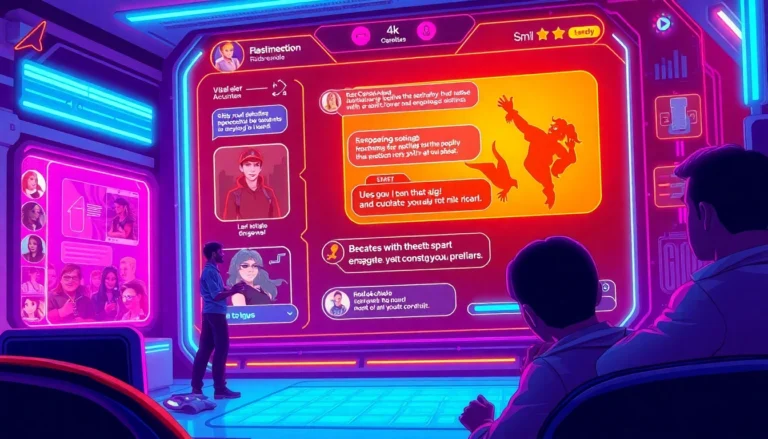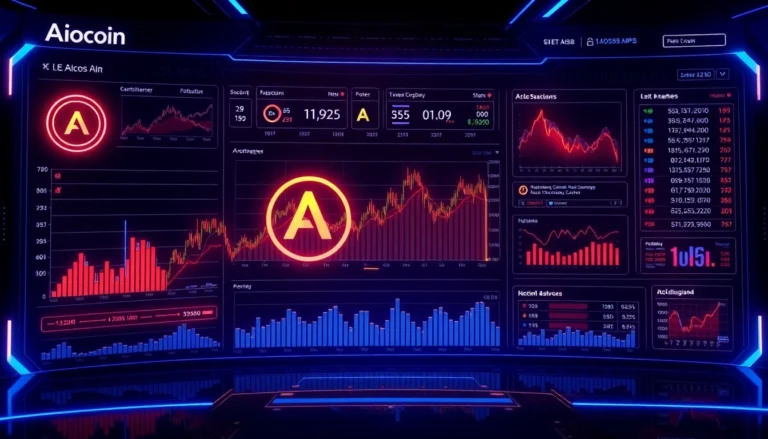Understanding the Foundations of Team Collaboration
Defining Team Collaboration and Its Key Components
Team collaboration is a dynamic process where individuals within a group work collectively towards achieving shared objectives. Unlike simple task delegation, collaboration emphasizes interconnected efforts, where each participant’s contribution enhances the overall outcome. According to industry experts, Team Collaboration involves a confluence of skills, tools, and organizational culture that foster effective teamwork. Its fundamental components include clear communication, aligned goals, defined roles, mutual trust, and a supportive environment that encourages innovation and problem-solving.
At its core, collaboration requires a synergy where diverse skills and perspectives are integrated to generate superior results compared to individual efforts. This integration involves not only sharing information but also active participation, consensus building, and adaptive cooperation. Modern enterprises understand that successful collaboration can accelerate innovation, improve quality, and enhance employee engagement—all contributing to sustained competitive advantage.
The Role of Trust and Communication in Collaboration
Trust and communication stand as the pillars of effective team collaboration. Without trust, open dialogue, honest feedback, and a willingness to share ideas diminish, creating silos and fostering suspicion. Conversely, a high-trust environment encourages team members to take risks, admit mistakes, and voice innovative ideas without fear of judgment.
Communication, in turn, ensures that all team members are on the same page, understand their roles, and comprehend project goals. Effective communication encompasses clarity, active listening, and timely feedback. It involves establishing norms for regular updates, utilizing various channels—whether emails, instant messaging, or face-to-face meetings—and ensuring that information flow supports transparency.
For example, organizations that implement structured communication protocols—like daily stand-ups or digital collaboration platforms—have observed significant improvements in project delivery times and team cohesion. Trust and communication form a mutually reinforcing cycle; trust promotes openness, and transparent communication strengthens trust further.
Common Challenges and How to Overcome Them
Despite its benefits, team collaboration faces several common hurdles. These include misaligned goals, cultural differences, inadequate tools, lack of trust, and poor communication. Each obstacle can hinder productivity and erode team cohesion if not addressed effectively.
To surmount these challenges, organizations should start with clarity in objectives and roles. Regular alignment meetings and shared success metrics help unify team efforts. Cultivating a culture of openness and psychological safety encourages honest dialogue and trust-building. Choosing appropriate collaboration tools—such as project management software, instant messaging apps, and shared document platforms—can also facilitate seamless workflows.
For instance, implementing conflict resolution protocols ensures disagreements are addressed constructively, turning potential friction into opportunities for growth. Training sessions on effective communication and cultural competence further help teams overcome diversity-related challenges.
Strategies to Enhance Team Collaboration
Implementing Clear Communication Protocols
Establishing definitive communication protocols is paramount to ensuring everyone stays informed and engaged. This includes defining preferred communication channels for different types of messages, setting expectations about response times, and creating guidelines for constructive feedback.
For example, organizations often implement daily stand-up meetings to provide quick updates and identify blockers early. Additionally, adopting collaboration tools like Microsoft Teams, Slack, or Asana enables real-time communication and task tracking, preventing miscommunication and ensuring accountability.
Clear protocols not only streamline communication but also reduce misunderstandings, duplication of efforts, and delays, ultimately boosting project efficiency.
Establishing Shared Goals and Roles
Clarity in objectives and individual responsibilities is essential for cohesive teamwork. Shared goals should be Specific, Measurable, Achievable, Relevant, and Time-bound (SMART), aligning all members towards a common vision. Defining roles ensures that each participant understands their specific contributions, reducing overlaps and gaps.
For instance, during a product launch, roles may include product designer, developer, marketer, and project manager, each with clear deliverables. Regularly revisiting goals and adjusting roles as needed maintains alignment amid evolving project dynamics.
Leadership plays a critical role in facilitating this clarity, fostering transparency, and encouraging team members to take ownership of their responsibilities.
Leveraging Collaboration Tools for Seamless Workflow
Digital tools have revolutionized team collaboration by providing centralized platforms for communication, document sharing, task management, and real-time editing. Tools like Slack, Microsoft Teams, Trello, and Asana enable teams to coordinate efforts effortlessly, irrespective of geographic locations.
Implementing the right mix of technology tailored to organizational needs can reduce email overload, accelerate decision-making, and foster innovation. For example, shared document platforms like Google Workspace or SharePoint allow simultaneous editing, version control, and easy access.
It is vital for organizations to offer comprehensive training and establish usage standards to maximize the benefits of collaboration tools, ensuring they enhance rather than hinder workflow.
Building a Collaborative Team Culture
Fostering Trust and Mutual Respect
Cultivating a culture rooted in trust and respect creates an environment where collaboration thrives naturally. Leaders can foster this culture by practicing transparency, recognizing contributions, and encouraging open dialogue. Providing psychological safety—where team members feel comfortable sharing ideas and admitting mistakes—strengthens trust exponentially.
Studies show that teams with high levels of mutual respect are more innovative and resilient. Initiatives such as team-building activities, peer recognition programs, and leadership transparency reinforce these values and promote cohesion.
For example, organizations like Google have implemented Project Aristotle, emphasizing psychological safety as a key determinant of team success.
Encouraging Cross-Functional Co-Creation
Cross-functional collaboration leverages diverse expertise across departments to solve complex problems and innovate. Encouraging co-creation requires breaking down siloed structures and fostering shared ownership of projects.
Techniques include cross-departmental workshops, joint project teams, and integrated goal-setting sessions. Examples include cross-functional task forces addressing strategic objectives or innovation labs involving marketing, R&D, and customer service teams.
Such approaches not only generate innovative solutions but also increase understanding and respect among teams, fostering a unified organizational culture.
Recognizing and Rewarding Collaborative Efforts
Recognition is a powerful driver of ongoing collaborative behavior. Rewards, whether formal or informal, affirm the value of teamwork and motivate continued engagement. This can include peer-to-peer recognition, awards for collaborative projects, or performance evaluations emphasizing teamwork contributions.
Leaders should integrate collaboration metrics into performance appraisals, emphasizing behaviors like information sharing, mutual support, and joint problem-solving.
For instance, companies like Salesforce have implemented recognition programs that celebrate collective achievements, reinforcing a collaborative culture.
Measuring and Optimizing Collaboration Performance
Setting Metrics for Collaboration Effectiveness
Quantifying collaboration success involves establishing clear, objective metrics. These may include project completion times, quality indicators, employee engagement scores, and innovation rates. Using tools like surveys, feedback sessions, and performance data helps organizations gauge collaboration health.
Advanced analytics and dashboards enable real-time monitoring, allowing leadership to identify bottlenecks and areas needing improvement.
Using Feedback to Improve Processes
Continuous improvement relies on collecting and acting upon feedback from team members. Regular retrospectives, pulse surveys, and one-on-one discussions reveal insights into collaboration challenges and successes.
Implementing a structured feedback loop ensures that lessons learned translate into actionable changes, fostering an adaptive culture that thrives on continuous enhancement.
Adapting Strategies for Continuous Improvement
Organizations must remain flexible in their approach, regularly revisiting collaboration strategies and adopting new tools or practices as needed. This iterative process facilitates innovation in workflows and strengthens team dynamics over time.
Benchmarking against industry best practices, staying informed through literature and case studies, and encouraging experimentation are essential to maintain high levels of collaboration effectiveness.
Real-World Examples and Best Practices
Successful Case Studies of Team Collaboration
A notable example is the development team at Airbnb, which emphasizes cross-functional collaboration through agile practices and shared goals. By integrating design, engineering, and marketing teams in iterative cycles, Airbnb constantly improves user experience and innovates rapidly.
Similarly, Toyota’s implementation of the Toyota Production System exemplifies how structured collaboration and continuous improvement (kaizen) can lead to operational excellence.
These success stories demonstrate the importance of a well-defined collaboration framework, leadership commitment, and a culture that values teamwork.
Lessons Learned from Leading Organizations
Leading organizations prioritize cultivating psychological safety, investing in collaboration technology, and recognizing teamwork efforts. They understand that collaboration is not just about processes but also about mindset and behaviors.
For instance, Google’s Project Aristotle revealed that psychological safety and dependability outweigh traditional metrics like team size—highlighting that an environment of trust is critical.
Emphasizing continuous learning, embracing diversity, and fostering open communication are common themes among successful teams.
Innovative Approaches to Collaboration Challenges
Emerging strategies include virtual reality meetings, AI-powered collaboration tools, and decentralized organizational structures. These innovations aim to bridge geographical barriers, automate routine tasks, and empower teams.
For example, companies using VR enable remote teams to participate in immersive experiences, enhancing engagement and co-creation.
Adopting such cutting-edge solutions requires a forward-thinking mindset, resource investment, and a willingness to experiment with new modalities.








